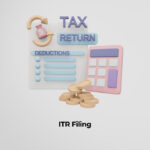An income statement helps business owners decide whether they can generate profit by increasing revenues, by decreasing costs, or both. It also shows the effectiveness of the strategies that the business set at the beginning of a financial period. The business owners can refer to this document to see if the strategies have paid off and they can come with the best solutions to yield more profit.
What is an Income Statement
An income statement is a financial statement that shows you the company’s income and expenditures. It also shows whether a company is making profit or loss for a given period. The income statement, along with balance sheet and cash flow statement, helps you understand the financial health of your business.
The income statement is also known as a profit and loss statement, statement of operation, statement of financial result or income, or earnings statement.
Components of an Income Statement
While all financial data helps paint a picture of a company’s financial health, an income statement is one of the most important documents a company’s leadership team and individual investors can review, because it includes a detailed breakdown of income and expenses over the course of a reporting period. This includes:
- Revenue: The amount of money a business takes in during a reporting period
- Expenses: The amount of money a business spends during a reporting period
- Income before taxes: All revenue less expenses but before taxes
- Net income: Income before taxes less taxes
- Earnings per share (EPS): Division of net income by the total number of outstanding shares
Above categories may be further divided into individual line items, depending on a company’s policy and the granularity of its income statement.
Analysis of an Income Statement
There are two methods commonly used to read and analyze an organization’s financial documents: vertical analysis and horizontal analysis. The difference between the two is in the way a statement is read and the comparisons you can make from each type of analysis.
Upright Analysis It refers to the method of financial analysis where each line item is listed even as a percentage of a base figure. In short, it’s the process of reading down a single column of data in a financial statement, determining how individual line items relate to each other (e.g., showing the relative size of different expenses, as line items may be listed as a percentage of operating expenses). This type of analysis makes it simple to compare financial statements across periods and industries, and between companies, because you can see relative proportions. It also helps you analyze whether performance metrics are improving.
Parallel Analysis It reviews and compares changes in the amounts in a company’s financial statements over multiple reporting periods. It’s frequently used in absolute comparisons, but can be used as percentages, too. Horizontal analysis makes financial data and reporting consistent along with growth comparison to it’s competitors.
Conclusion
In conjunction with the cash flow statement, balance sheet, and annual report, income statements help company leaders, analysts, and investors understand the full picture of a business’s operational results so they can determine its value and efficiency and, ideally, predict its future trajectory. Financial analysis of an income statement can reveal that the costs of goods sold are falling, or that sales have been improving, while return on equity is rising. Income statements are also carefully reviewed when a business wants to cut spending or determine strategies for growth.
We simplify your business so that you can spend time on things that matter.
Happy to hear from you, Treelife Team
Disclaimer The content of this article is for information purpose only and does not constitute advice or a legal opinion and are personal views of the author. It is based upon relevant law and/or facts available at that point of time and prepared with due accuracy & reliability. Readers are requested to check and refer to relevant provisions of statute, latest judicial pronouncements, circulars, clarifications etc before acting on the basis of the above write up. The possibility of other views on the subject matter cannot be ruled out. By the use of the said information, you agree that the Author / Treelife is not responsible or liable in any manner for the authenticity, accuracy, completeness, errors or any kind of omissions in this piece of information for any action taken thereof.







